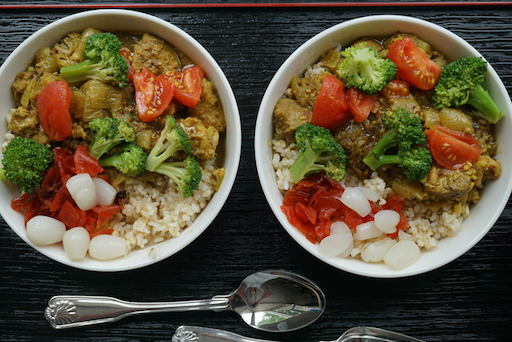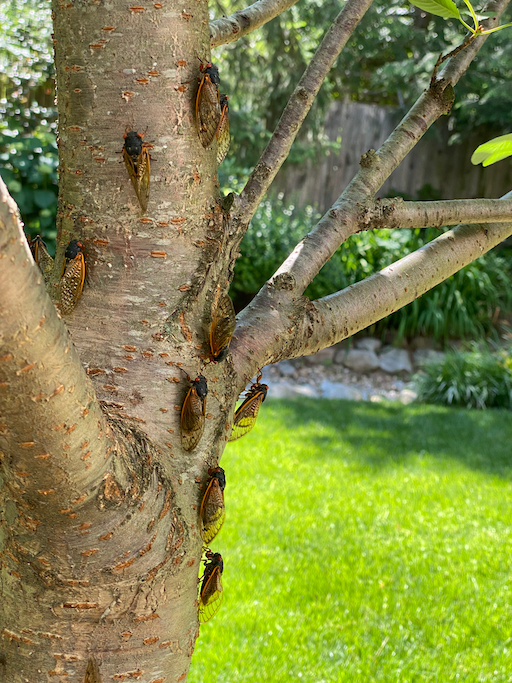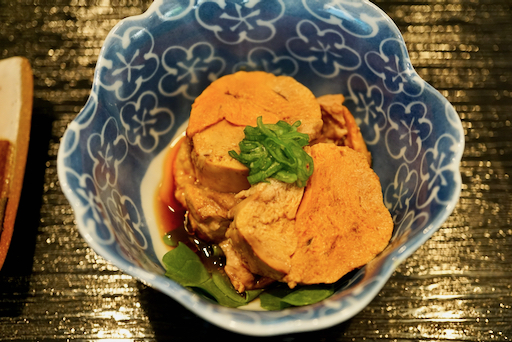This is continuation of what to do with the bone-in pork roast we have been getting. The roast is rather large and is either shoulder or thigh. After removing the bone(s), I make one large roast for cooking in the Weber grill and a smaller roast for Ni-buta 煮豚. The remaining odds and ends, I cut into small chunks for other recipes, mostly stewed dishes. We found out that once we cook the meat in chicken broth the meat tends to be much more tender and it is much easier to convert into other stewed dishes without long cooking. So, I cooked the pork in chicken broth and kept it in the refrigerator. The meat exuded collagen and the liquid congealed which is also used in the subsequent dish adding good mouth feel and flavors. In addition, if we do not have a chance to make the meat into another dish, we can reheat the meat in the broth. So this pork was 2 weeks old and re-heated once. I asked my wife to make this curry dish. She made it once before based on a recipe from her favorite Indian cookbook. We liked it but somehow we never blogged it.
We served the curry for lunch one weekend as shown in the first picture. We served it on previously made brown rice and added skinned Campari tomatoes, cooked broccoli and Japanese pickles; rakyo ラッキョウ, fukusinzuke 福神漬け.
Ingredients:
1 tsp ground cumen
1/8 tsp cayenne
1 tsp. gound cardamon
1 tsp. cinnamon
1 1/2 tsp. black mustard seed
1 tsp. Ground fenugeek seed
1 tsp. salt
1 Tbs. brown sugar
1/3 cup sushi vinegar (recipe calls for white wine vinegar)
2 onions peeled and roughly minced
1 inch cube ginger (finely chopped)
2 cloves garlic (finely chopped)
1 Tbs. ground coriander
1/2 tsp ground tumeric
1 lb. previously simmered pork butt/shoulder trimmings
The second picture shows all the spices lined up. My wife does this to keep track of what spices she has mis en place and as you can see there are quite a few.
Directions:
Pour the spices from cumin through brown sugar into the vinegar and stir to make a slurry then set aside. Saute the onions in a sauce pan until slightly carmelized. Add the garlic and ginger and cook until fragrant. Add the spice slurry to the onions and stir until the spices bloom (smell fragrant). Then add the coriander and turmeric stirring until they bloom too. Then add the precooked pork and mix to cover with the sauce. If there is not enough liquid add water or chicken broth. Cover and simmer for 20 minutes. The third picture shows the curry simmering in the pan.
I think of this as not-quite a curry. It is spicy in terms of the layers of flavor of the many spice used but not particularly hot (depending on the amount of cayenne pepper). It does have a sweet/ sour undertone from the combination of the sautéed onions and vinegar which adds a brightness to the overall flavor. This is a good dish with rice or even bread.





















